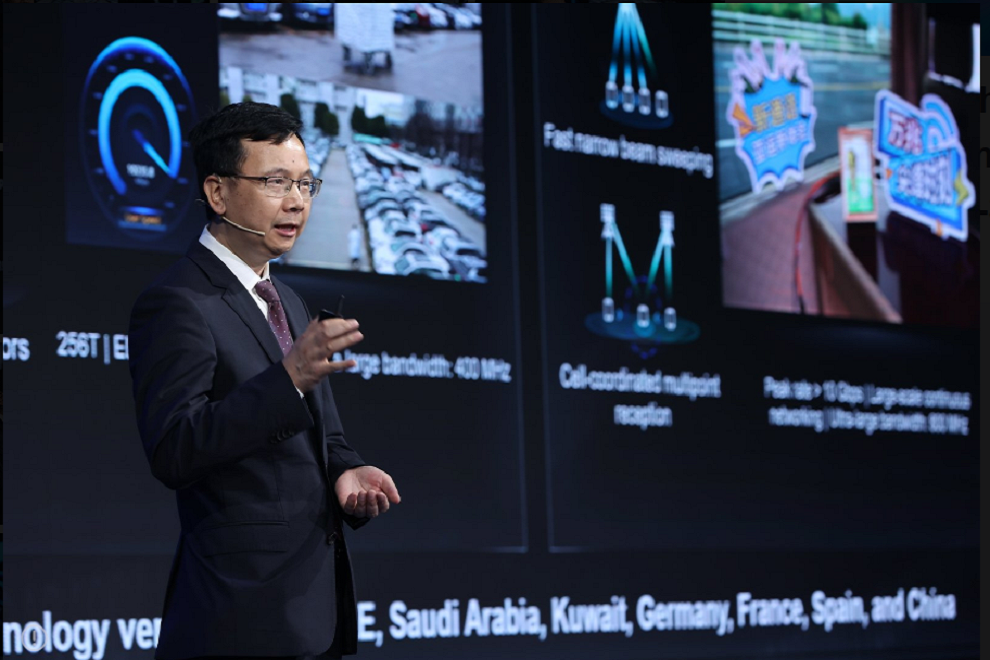At the recently concluded Mobile World Congress (MWC) Shanghai, the global tech giant Huawei announced that will launch a complete set of commercial 5.5G network equipment in 2024. Senior executives at the company believes that its launch will mark the beginning of the 5.5G era for the ICT industry. Huawei also stated that 5.5G will reach 1.5 billion subscribers by 2030.
In the future, Huawei expects that individuals, homes, and industries will pose higher requirements on ICT infrastructure. As demand for immersive services grows exponentially, carriers will need to provide users with 10 Gbit/s connection experiences. In addition, carriers need to offer highly-reliable, low-latency networks in order to meet industry requirements for digital and intelligent transformation
5.5G industry vision and reached a consensus on the characteristics of 5.5G networks. Huawei proposed the concept of a “5.5G Era”, based on an end-to-end solution that integrates comprehensive evolved technologies, including 5.5G, F5.5G, and Net5.5G. This solution would protect operators’ previous investment in 5G, while also improving network performance by 10 times. This 5.5G Era would feature 10-gigabit peak downlink speeds and gigabit peak uplink speeds to meet increasingly diverse service requirements. It would also refresh the industry vision by using new technologies like passive IoT to unlock a market of 100 billion IoT connections.
Yang Chaobin, Director and President of ICT Products & Solutions, Huawei, said: “With a clearly defined standardization schedule, the 5.5G Era is already poised for technological and commercial verification. In 2024, Huawei will launch a complete set of commercial 5.5G network equipment to be prepared for the commercial deployment of 5.5G. We look forward to working with all industry players to embark on the new journey towards the 5.5G era.”
Commercial 5G services hit the market four years ago, and have since been introduced to more than 17,000 private-network projects around the world. Both revenues from 5G private networks and the number of industrial connections has tripled. Huawei, who was at the helm of the first wave of 5G implementation, is now on track to usher the next generation evolution for telecom networks with 5.5G. Huawei believes the 5.5G era will bring 100 times more business opportunities for operators, including toC immersive experience, industry digitalization, and full-time IoT.
In terms of bandwidth, 5.5G uses new spectrum and ELAA technologies to increase the peak downstream rate from 1 Gbit/s in the early stage of 5G to 10 Gbit/s and from 100 Mbit/s in the upstream direction to 1 Gbit/s.
From the perspective of cellular IoT, 5.5G will support passive IoT technology for the first time, increasing the number of cellular IoT connections from 10 billion to 100 billion. When it comes to network certainty, 5.5 Gbit/s supports millisecond-level latency. (compared with the 20 ms typical latency in the ToB scenario at the early stage of 5G). centimeter-level positioning precision (compared with meter-level positioning precision in the early stage of 5G), and network reliability for to-B applications will be improved from four nines to five nines or even six nines.
5.5G also introduces the communication sensing integration function for the first time, providing sensing functions on wireless and optical networks, and expanding the commercial space. 5.5G further upgrades the immersive experience, increasing the number of online users from 10 million to 1 billion. Specific applications are further upgraded, from immersive to interactive and collaborative, from 2D HD video to new videos such as holographic, naked eye 3D, XR Pro and more.
Currently, the technical bottlenecks of naked-eye 3D screens and content have been broken through. Multiple terminals have been released for commercial use, and the industry has begun to put them into commercial use. Terminal manufacturers, such as Apple, released XR terminal products to further enhance user experience to interactive.
5.5G will help us move from “connection” to “sensing”. With the help of 5.5G technology, sensing can become a consensus in the industry. Perception capabilities can be effectively verified in scenarios such as smart transportation and low-altitude economy, making urban infrastructure more efficient and smart, and meeting the needs of people’s livelihood and industries. It can be used for ranging and speed measurement and can provide all-weather and full-view sensing services. Synaesthesia also provides smart transportation services, reducing traffic accidents by 80% and improving traffic efficiency by 30%.
In July 2022, in a bid to drive the continuous evolution of ICT infrastructure, Huawei launched the “Lighting up the 5.5G Era” initiative, joining hands with industries to move from the 5G era to an even more thriving 5.5G era. The ICT network infrastructure of the 5.5G era includes 5.5G, 5.5G Core, F5.5G, and Net5.5G. There is no doubt that 5.5G is the path towards the intelligent world of 2030
Huawei has already started helping a number of operators around the world begin commercial verification of 5.5G. The company believes the 5.5G industry will continue growing quickly as the first release of 5.5G standards is expected to be confirmed in the first half of 2024, and related technologies have already been extensively verified.
Advances in standardization, spectrum, industry chain, and ecosystem development will turn 5.5G from an agreed idea into a true reality. Together with its industry partners, Huawei aims to contribute to a mature 5.5G industry and lay the groundwork for 5.5G commercialization, thus paving the way for the intelligent world.








